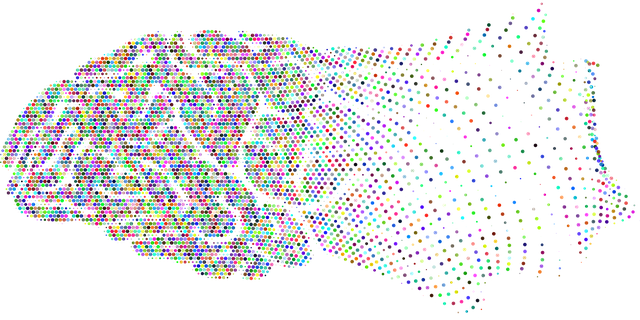Lone Tree Depression Therapy: Stress Management Workshops for Lasting Well-being
An engaging Lone Tree Depression Therapy stress management workshop combines interactive activities…….
Welcome to an extensive examination of a therapeutic approach that has garnered significant attention worldwide—Lone Tree Depression Therapy. This innovative method, often hailed as a game-changer in mental health treatment, offers a unique perspective on combating depression and improving overall well-being. In this article, we will delve into the intricacies of this therapy, its global reach, and the multifaceted impact it has on individuals, societies, and economies. By exploring various facets, from historical roots to futuristic possibilities, readers will gain a comprehensive understanding of Lone Tree Depression Therapy’s role in modern mental healthcare.
Definition: Lone Tree Depression Therapy (LDT) is a holistic therapeutic approach that leverages the power of nature, particularly solitary trees, as a catalyst for emotional healing and mental well-being. It involves various techniques, including mindfulness exercises, meditation, and cognitive behavioral therapies, all centered around the symbolic and therapeutic value of trees in human culture and psychology.
Core Components:
Historical Context: While modern psychology formally recognizes LDT as a distinct therapeutic approach relatively recently, the concept has deep historical roots. Ancient cultures revered trees as sacred entities, often associating them with wisdom, healing, and spiritual power. Indigenous communities worldwide have long used tree-based rituals and practices for therapy and cultural bonding. In contemporary times, LDT draws inspiration from these ancient traditions while incorporating evidence-based psychological techniques to create a unique and effective therapeutic framework.
Significance: Lone Tree Depression Therapy offers a distinct advantage by combining the healing power of nature with evidence-based psychotherapy. It provides an alternative approach for individuals who may not respond well to traditional therapies or seek a more naturalistic, holistic method to manage their mental health. LDT’s ability to foster connection, promote mindfulness, and encourage personal growth makes it a valuable addition to the mental healthcare landscape.
International Influence: Lone Tree Depression Therapy has gained traction worldwide, with growing interest from mental health professionals, researchers, and policymakers. Its popularity can be attributed to several factors: the increasing recognition of nature-based therapies, the global mental health crisis, and the unique cultural significance of trees in many societies. Countries like Japan, where tree-respecting traditions are deeply rooted, have embraced LDT as a natural extension of their existing therapeutic practices.
Regional Trends:
Impact Across Different Regions: The global impact of LDT is evident in several ways:
Market Dynamics: The global mental health market is experiencing significant growth, driven by increasing awareness, rising prevalence of mental disorders, and expanding access to care. Lone Tree Depression Therapy, as a niche yet rapidly growing segment, is influenced by several economic factors:
Investment Patterns: Investors are increasingly recognizing the potential of nature-based therapies, leading to funding for research, specialized facilities, and technology development related to LDT. Startups and established companies are exploring innovative ways to deliver LDT, such as mobile apps and virtual reality experiences, which can expand access and attract new markets.
Economic Systems and LDT: Lone Tree Depression Therapy has the potential to impact economic systems in several ways:
Innovation in LDT: Technology plays a pivotal role in modernizing Lone Tree Depression Therapy and making it more accessible. Here are some key advancements:
Impact on Therapy Delivery: Technological innovations have several implications:
Future Potential: The fusion of technology and nature in LDT holds immense potential:
Legal Frameworks: The regulatory environment surrounding Lone Tree Depression Therapy varies across jurisdictions but generally reflects a growing recognition of its value. Governments and healthcare authorities are implementing policies to support and guide the practice:
International Collaborations: Global initiatives focus on standardizing practices and sharing knowledge, ensuring cultural sensitivity and ethical considerations in LDT. Organizations like the World Health Organization (WHO) and international mental health associations play pivotal roles in shaping global policies.
Challenges and Opportunities: The regulatory landscape presents both challenges and opportunities:
Main Challenges:
Criticisms and Solutions:
Case Study 1: Forest Therapy Programs in Japan
Japan’s long-standing tradition of forest therapy (Shinrin-yoku) has been integrated into modern LDT practices. A study in the Japanese Alps revealed significant improvements in participants’ mood, stress levels, and overall well-being after engaging in regular forest walks and mindfulness exercises. This program’s success lies in its cultural roots and combination of traditional wisdom with modern therapeutic techniques.
Case Study 2: Urban Tree Therapy in New York City
In the bustling city of New York, a non-profit organization introduced an LDT program in urban parks. The initiative involved guided meditation sessions under trees, followed by group discussions. Participants reported reduced stress, improved mood, and enhanced social connections. This case demonstrates how LDT can thrive in urban settings, providing much-needed respite from the hustle and bustle.
Case Study 3: Indigenous Healing Retreats in Canada
First Nations communities in Canada have developed healing retreats centered around Lone Tree Depression Therapy, incorporating traditional ceremonies and stories. These retreats attract both indigenous and non-indigenous participants seeking emotional healing and cultural connection. The success lies in respecting indigenous knowledge and creating a safe space for personal growth.
Growth Areas:
Emerging Trends:
Strategic Considerations:
Lone Tree Depression Therapy has emerged as a vibrant and growing branch within the broader mental health landscape, offering a unique and effective approach to treating depression and promoting well-being. Its global impact is evident in the increasing demand, research interest, and policy support it receives. As we’ve explored, LDT combines ancient wisdom with modern technology, providing a holistic and accessible therapy for a wide range of individuals.
The future prospects for Lone Tree Depression Therapy are promising, with potential growth areas, emerging trends, and strategic considerations guiding its development. By addressing challenges, leveraging technological advancements, and fostering cultural sensitivity, LDT can continue to revolutionize mental healthcare, offering hope and healing to those in need worldwide. As the tree metaphor suggests, LDT provides a strong foundation for personal growth and resilience, enabling individuals to thrive in all aspects of their lives.

An engaging Lone Tree Depression Therapy stress management workshop combines interactive activities…….